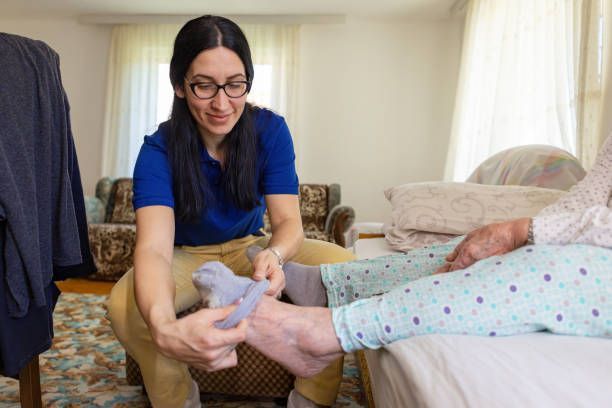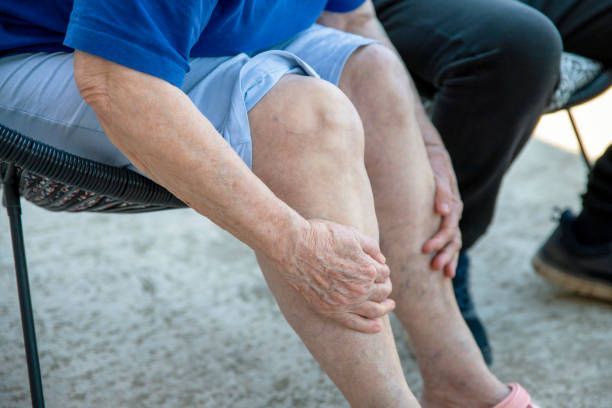What is the Katz Index of Independence in Activities of Daily Living?
What is the Katz Index of
Independence in Activities of Daily Living?
At 7 Day Home Care, we are dedicated to providing exceptional assistance with activities of daily living (ADLs) for the elderly, prioritizing their safety, well-being, and peace of mind. Our certified home health aides, under the supervision of our registered nursing staff, offer comprehensive support in essential self-care tasks such as bathing, dressing, toileting, transferring, continence, and feeding. By tailoring our services to each individual’s specific needs, we ensure that our clients maintain their independence and dignity while receiving the appropriate level of care. Our compassionate approach not only enhances the physical health and safety of our clients but also contributes to their emotional and mental well-being, reducing anxiety and promoting a higher quality of life. Families can rest assured knowing that their loved ones are in capable hands, receiving professional care that fosters a secure and comfortable living environment.

Are You Searching for a Home Care Agency Near Me
that Compassionately Provides Assistance with Activities of Daily Living?
The Katz Index of Independence in Activities of Daily Living (ADL) is a widely recognized and utilized tool for assessing the functional status of elderly individuals. Developed in the 1960s, the Katz Index remains a cornerstone in geriatric care, providing critical insights into an individual's ability to perform basic self-care tasks essential for daily living. This article, reviews the origins of the Katz Index, its methodology, and its contemporary applications. Home Health Care Agencies leverage this tool to tailor their services to meet the unique needs of each elderly client, ensuring they receive the appropriate level of care and support.
Origins of the Katz Index of Independence in Activities of Daily Living
The Katz Index of Independence in Activities of Daily Living was developed by Dr. Sidney Katz, a geriatrician, and his colleagues at the Benjamin Rose Hospital in Cleveland, Ohio. The development of the index was driven by the need for a standardized method to evaluate the functional capabilities of elderly patients, particularly those recovering from illness or surgery. Dr. Katz and his team aimed to create a tool that could objectively measure the ability of elderly individuals to perform essential self-care activities, which would, in turn, guide healthcare providers in planning appropriate care and interventions.
The initial research, published in 1963, involved a study of elderly patients and the development of a scoring system based on their ability to perform six basic activities of daily living: bathing, dressing, toileting, transferring, continence, and feeding. These activities were chosen because they are fundamental to an individual's ability to live independently. The simplicity and clarity of the Katz Index made it a practical and reliable tool for healthcare professionals, and it quickly gained widespread acceptance in the field of geriatrics.
Structure of the Katz Index of Independence in Activities of Daily Living
The Katz Index assesses six specific activities of daily living, each of which is critical for independent living. The activities are:
- Bathing: The ability to wash oneself completely, including getting into and out of the bathtub or shower.
- Dressing: The ability to get dressed and undressed independently, including managing fasteners like buttons and zippers.
- Toileting: The ability to get to and from the toilet, use it appropriately, and manage personal hygiene.
- Transferring: The ability to move in and out of bed or a chair independently.
- Continence: The ability to control bowel and bladder functions.
- Feeding: The ability to eat independently, including cutting food and bringing it to the mouth.
Each activity is scored on a binary scale, where a score of "1" indicates independence and a score of "0" indicates dependence. The total score ranges from 0 to 6, with higher scores indicating greater levels of independence.
Application of the Katz Index of Independence in Activities of Daily Living
Historical Use of Katz Index
Since its development, the Katz Index has been extensively used in various settings, including hospitals, nursing homes, and home care environments. Initially, it was primarily used to assess the functional status of elderly patients during hospital stays and to monitor their progress during rehabilitation. The index helped healthcare providers determine the level of care needed, plan discharge strategies, and make decisions about long-term care placements.
Contemporary Use of Katz Index
Today, the Katz Index remains a vital tool in geriatric care and is used by healthcare professionals around the world. Its applications have expanded beyond hospital settings to include routine assessments in nursing homes, assisted living facilities, and home care services. At 7 Day Home Care, we utilize the Katz Index to assess the needs of our elderly clients and tailor our services accordingly. Here’s how it is used today:
- Initial Assessment: The Katz Index is often used during the initial assessment of a new client. By evaluating the individual's ability to perform each of the six activities, we can determine their baseline level of independence and identify areas where assistance is needed.
- Care Planning: Based on the results of the Katz Index, our certified home health aides, under the supervision of our registered nursing staff, develop a personalized care plan. This plan outlines the specific tasks that the aide will assist with, ensuring that the client receives the appropriate level of support while maintaining as much independence as possible.
- Monitoring Progress: The Katz Index is also used to monitor the client's progress over time. Regular reassessments allow us to track changes in the client's functional status and adjust the care plan as needed. This ongoing evaluation helps to ensure that the client continues to receive the right level of care and support.
- Family Communication: The results of the Katz Index provide a clear and objective way to communicate with family members about the client's needs and progress. This transparency helps families understand the level of care their loved one requires and provides peace of mind knowing that appropriate measures are being taken to support their well-being.
Importance in Home Care Agency Services
The Katz Index is particularly valuable in the context of home care for several reasons:
- Personalized Care: By identifying specific areas where the client needs assistance, the Katz Index allows for highly personalized care plans. This tailored approach ensures that clients receive the support they need while promoting their independence and dignity.
- Early Intervention: Regular use of the Katz Index enables early detection of changes in the client's functional status. Early intervention can prevent further decline and improve outcomes by addressing issues promptly.
- Quality of Life: Maintaining independence in activities of daily living is crucial for the quality of life of elderly individuals. The Katz Index helps ensure that clients receive the appropriate level of support, allowing them to continue living safely and comfortably in their own homes.
Benefits of Using the Katz Index
The Katz Index offers several benefits for both clients and healthcare providers:
For Home Care Agency Clients and their Families
- Promotes Independence: By identifying areas where clients need assistance, the Katz Index helps promote independence in other areas. Clients can continue to perform tasks they are capable of, which enhances their sense of autonomy and self-worth.
- Ensures Appropriate Care: The index ensures that clients receive the right level of care for their specific needs. This tailored approach prevents both under- and over-care, leading to better outcomes and greater satisfaction.
- Improves Safety: By regularly assessing the client's ability to perform daily activities, potential safety risks can be identified and addressed promptly. This proactive approach reduces the risk of accidents and injuries.
For Home Health Care Agency Providers
- Objective Measurement: The Katz Index provides an objective way to measure the client's functional status. This standardization ensures consistency in assessments and helps in making informed care decisions.
- Effective Communication: The results of the Katz Index offer a clear and concise way to communicate the client's needs and progress to family members and other healthcare providers. This transparency fosters collaboration and improves overall care coordination.
- Resource Allocation: By accurately assessing the client's needs, the Katz Index helps healthcare providers allocate resources more effectively. This ensures that clients receive the necessary support without unnecessary expenditure of time and resources.
The Katz Index of Independence in Activities of Daily Living is an essential tool in geriatric care, providing a standardized method to assess the functional capabilities of elderly individuals. Its simplicity, reliability, and practicality have made it a cornerstone in various care settings, from hospitals to home care. At 7 Day Home Care, we recognize the value of the Katz Index to ensure clients receive the appropriate level of support tailored to their unique needs. By promoting independence, ensuring appropriate care, and improving safety, the Katz Index helps enhance the quality of life for elderly individuals, allowing them to live with dignity and comfort in their own homes. For families and caregivers, it offers peace of mind and a clear understanding of their loved one’s needs, fostering a collaborative approach to care.
To learn more about our home care agency services near you, please call 516-408-0034.
Brian Callahan
7 Day Home Care










